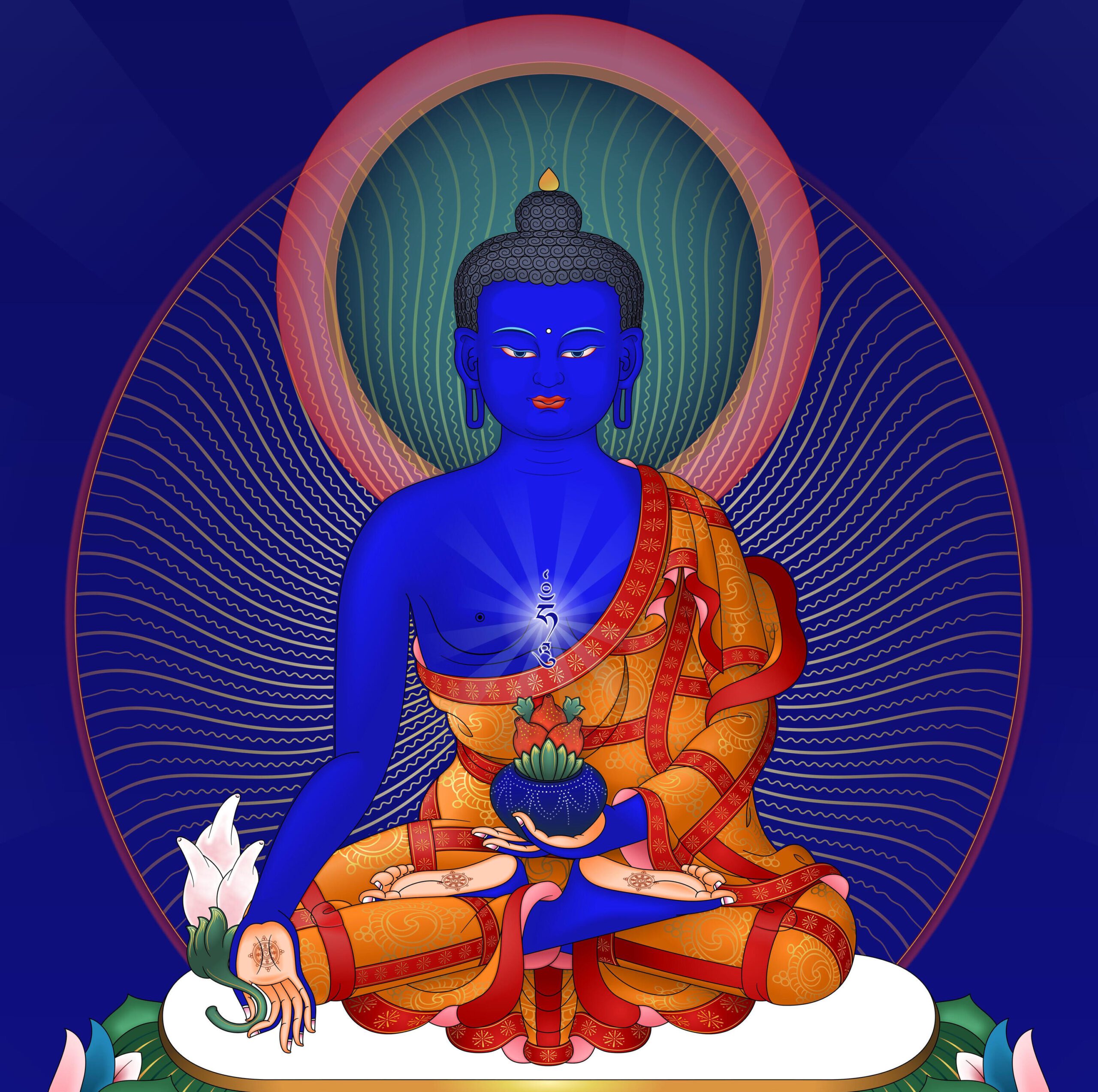Buddha as Disruptor
At the heart of Shakyamuni Buddha’s spiritual revolution was the doctrine of anātman, meaning “no-soul” or “selflessness.” This was not just a refinement of existing spiritual thought — it was a direct challenge to the deeply held belief in an unchanging self, and that spiritual liberation was achieved by realizing that atman (self, soul) is eternal and persists beyond death. The Buddha essentially said, “You don’t exist the way you believe you do.” It was the pinnacle of heterodoxy.
While many of the Buddha’s teachings built upon existing Indian philosophical concepts — such as karma, rebirth, and meditation — the doctrine of anātman was truly unique, directly challenging the very foundation of Upanishadic and Brahmanical traditions. The Buddha redefined liberation not as discovering an eternal essence but as seeing through the illusion of self entirely.
The Buddha was not just a philosopher; he was a disruptor of identity and power. His teachings challenged not only the habitual patterns that perpetuate personal suffering but also the entrenched social order — especially those who derived their status, religious authority, and power from the caste system.
Fast forward to today, and the teachers, scholars, and participants of the Psychedelic Buddhism Conference 2025 are taking up this same mantle of disruption, heterodoxy, and awakening themselves and society through unorthodox means.
A New Wave of Psychonauts
This past weekend’s two-day Psychedelic Buddhism Conference 2025, held both in person at The New School University in New York City and virtually, brought together over 600 global participants, including leading Theravada, Insight, Zen, and Vajrayana teachers, longtime practitioners, scholars, and researchers, to explore the intersection of Buddhist practice and psychedelic-assisted awakening.
The conference was hosted by Psychedelic Sangha, an organization founded in 2018 to promote a non-sectarian and non-traditional approach to Buddhism that recognizes the spiritual efficacy of psychedelics. The group prioritizes community-building, particularly through Dharmic art and music, and draws inspiration from pioneers of Psychedelic Buddhism in America, including the late Ralph Metzner and Ram Dass, as well as Tenzin Bob Thurman, Ph.D., and Jack Kornfield, and others.
“The question is no longer whether psychedelics should be used in dharma practice. Rather, the discussion has shifted to how best to integrate them.”
The Psychedelic Buddhism Conference 2025 was led exclusively by Western Buddhist teachers, with no heritage Buddhist monastics present. The focus was on Psychedelic Buddhist lineage holders rather than traditional Buddhist authorities, according to Doc Kelley, Ph.D, co-founder of the Psychedelic Sangha. While some conference teachers have formal lineage transmission — such as Lama Mike Crowley, Lama Justin von Bujdoss, Lama Liz Monson, Venerable Kokyo Henkel, and Chandra Easton — they were all Westerners. Bob Thurman and Erik Davis were deliberately chosen to open the conference to establish continuity with the pioneers of American Psychedelic Buddhism. Kelley emphasized that the Psychedelic Sangha and the conference are not structured around a singular guru or teacher, institution, or orthodoxy. Instead, they prioritize community over hierarchy, reflecting the experimental and heterodox spirit of Psychedelic Buddhism.
Amid the current-day psychedelic renaissance in popular culture and growing interest in psychedelics for both clinical therapy and spiritual practice, the conference aimed to deepen the conversation around their role in Buddhism. Its intention was to establish a sophisticated, trauma-informed, and scientifically grounded framework for integrating psychedelics into Buddhist meditation, ethics, art, and sangha support systems — while still honoring the mystical and ineffable dimensions of the path.
During the first wave of Western psychonauts in the 1960s — a number of whom later became prominent Buddhist teachers — psychedelics were often seen as a temporary doorway, a spark of initial inspiration to be set aside once serious meditation practice began. In contrast, today’s leading voices are positioning psychedelics as an ongoing and integral aspect of contemporary Buddhist practice.
Psychedelics as Accelerants on the Path
After the Medicine Buddha was invoked as the conference’s patron saint, Erik Davis, Psychedelic Sangha co-founder and author of Zig Zag Zen, framed the discussion within the broader history of psychedelics in Western Buddhism. He traced this evolution from early figures like Ram Dass and Timothy Leary through the psychedelic experimentation of the 1960s, the backlash and prohibition of the 1970s, and into today’s so-called Psychedelic Renaissance.
Bob Thurman and Lama Liz Monson delivered the conference’s inaugural keynotes, blending humor, profound insight, and visionary perspective. Both speakers stressed how psychedelics, when used skillfully, can lead practitioners to transformative realizations of selflessness—insights that go beyond intellectual understanding. They agreed that for experienced meditators, psychedelics can serve as powerful catalysts, revealing the mind’s empty and luminous nature.
“Psychedelics can be a very powerful accelerant of what otherwise takes long years of meditation,” Thurman said. “When a person is prepared to melt down into the subtle body-mind, psychedelics can help. And then they can experience reality outside of the network of their habitual conditioning. This is extremely beneficial for realizing selflessness and emptiness. You can consider psychedelics a saving grace from the plant world.”
Lama Liz described the combined path of psychedelics and meditation as a fourth vehicle — ösel yana, the Vehicle of Clear Light and stressed the importance of integrating psychedelic experience with daily life. “The goal, ultimately, is not merely to have extraordinary experiences but to integrate those insights into daily life, cultivating wisdom, compassion, and creative engagement with the world.”
Some speakers noted continued resistance from within Western Buddhist communities. As Kelley said, “Most American Buddhist communities are tolerant of psychedelics as a means to getting on the path, but do not approve of them as a valid tool to be used once on the path.”
Like the Buddha’s radical teachings on selflessness, psychedelics can obliterate our carefully constructed identities, expose the illusory nature of control, and reveal a reality that can be both terrifying and liberating. And just as in ancient India, this disruption is not welcomed by everyone. Kelley nodded, “We are fine being the heterodoxy.”
Psychedelic Buddhism in Practice
The second morning of the conference featured teachings from seven speakers on how Buddhists are integrating psychedelics into their meditation, contemplation, and sadhana practices. One emerging trend among Buddhists, according to a number of the presenters, is using psychedelics is specifically Dzogchen and Mahamudra meditation. John Gorman spoke about writing manuals and teaching groups non-dual meditation while using 5-MeO-DMT, a naturally occurring psychedelic compound found in certain plants, known for producing intense, fast-acting experiences characterized by ego dissolution and a sense of merging with pure awareness. Unlike other psychedelics, its effects are typically short-lived, lasting no longer than thirty minutes. Gorman also highlighted how some contemporary Tibetan Buddhist teachers, including Dzongsar Khyentse Rinpoche, have discussed the use of ayahuasca and other psychedelics in Tibetan Buddhist rituals.
Spring Washam, founder of Lotus Vine and a senior teacher at Spirit Rock, shared insights from over a decade of hosting retreats that combine ayahuasca with Buddhist contemplations, particularly on the Four Brahmaviharas—loving-kindness, compassion, joy, and equanimity. She noted that many senior teachers from Spirit Rock and the Insight Meditation Society have attended her retreats. Spring said, “Ayahuasca is a powerful medicine—it heals—it should be honored and respected. When used with deep intention, it can reveal the nature of mind, much like meditation. But it is not a shortcut, nor a replacement for practice. Rather, it complements the path, opening doors that must still be walked through with mindfulness and care.”
Zen teacher Rev. Kokyo Henkel captured a key theme of the conference in his talk, How Buddhist Practice Might Benefit Psychonauts and How Psychedelic Practice Might Benefit Buddhanauts. He and other speakers explored how Buddhism offers invaluable tools for navigating psychedelic experiences, including ethical discipline, stabilizing practices such as breathwork, mantra, and mindfulness, and frameworks for understanding altered states. In turn, all the teachers emphasized how psychedelics might provide Buddhist practitioners with profound insights into nonduality, the possibility of direct experience of emptiness, “initiatory pointing-out instructions,” and the ability to uncover and release deep-seated psychological attachments.
This Isn’t Buddhists’ First Rodeo With Psychedelics
During the second of three panel discussions, the focus turned to psychedelics in the context of Buddhist history. The conversation opened with a long-standing question: does the use of psychedelics contravene the Buddhist fifth precept, which prohibits the consumption of “fermented drinks that cause carelessness”? Traditionally, this has been interpreted as referring to alcohol, though modern teachers, including Thich Nhat Hanh, have extended it to all substances that impair mindfulness. Given the broader Indian religious context of the Buddha’s time, where psychoactive substances like cannabis bhāṅg were used ritually, it is almost certain that he encountered them. However, his silence on the topic — beyond prohibiting alcohol — leaves room for debate on whether certain plant-based medicines could be used skillfully within a Buddhist framework.
The debate on the role of psychoactive plants in Buddhist practice was settled centuries ago, according to Professors Stuart Ray Sarbacker, Ph.D., and Ian Baker, Ph.D. Sarbacker discussed Vasubandhu’s teachings on achieving supernatural abilities aided by psychoactive plants, while Baker traced the historical unfolding of mind-altering substances in Vajrayana Buddhism, showing how tantra modified earlier proscriptions against their use. Likely candidates for use among psychedelically inclined yogis include the famed Soma—possibly containing Amanita muscaria and other plants—along with the use of cannabis, Datura, Syrian rue, Aconite, and nutmeg, among others.
Baker and Lama Mike Crowley highlighted key tantric texts that reference mind-altering alchemical concoctions, such as the Hevajra Tantra (8th–9th century CE) and, later, the accounts of yogis in The Lives of the 84 Mahasiddhas from the 12th century. Baker also discussed the intriguing reference to psychedelic substances being administered through a vulture quill directly into the eye, as found in The Fourfold Heart Essence, a seminal Dzogchen cycle from the 14th century in Tibetan Buddhism. And far from being relegated to history, the use of psychedelic alchemy among Buddhists remains a living tradition today, particularly in Nepal, Burma, and Assam, as Baker showed from his presented research.
For those attending the Psychedelic Buddhism Conference 2025, the question is no longer whether psychedelics should be used in dharma practice. Rather, the discussion has shifted to how best to integrate them. How can practitioners draw inspiration from past yogis, informed by Indian alchemy, Ayurveda, and Tibetan medicine, as well as modern research into plant-based and synthetic psychedelics? How can these substances be used to deepen the realization of fundamental Buddhist insights — awakening to suffering, selflessness, and impermanence — while simultaneously expanding the capacity for loving compassion?
Skillfully Bringing Buddhism and Psychedelics Together
The integration of Buddhist wisdom and psychedelic practice is no longer fringe. It is moving well beyond the socio-political controversies of previous decades in the West, beyond the fifth-precept debate, and even beyond the groundbreaking work found in Zig Zag Zen and D.E. Osto’s Altered States: Buddhism and Psychedelic Spirituality in America. The discussion has moved beyond the last time I wrote about The New Wave of Psychedelics in Buddhist Practice for Buddhadharma in 2018.
Now, these two great traditions — psychedelics and Buddhism — are in active conversation, shaping not only contemporary Buddhist discourse but also the experiences and realizations of practitioners. (For an in-depth look at how a seasoned Zen practitioner has integrated psychedelics into traditional practice, the film Descending the Mountain follows Vanja Palmer’s Zen temple in Switzerland, where psilocybin mushrooms are being explored as part of multi-day sesshin retreats.)
Most of the teachers shared anecdotes of their use of psychedelic substances in relation to their practice, highlighting not only their insights but challenges and psychological difficulties during and after the trips.
Stephen Batchelor described a recent psychedelic journey — after more than 60 years since the last time he tripped. Batchelor sees great potential for how psychedelics can serve as an amplifier of the process of human flourishing, which he contends is the whole point of the dharma.
“I find the idea that Buddhist practice is really about learning to flourish fully as a human being, as a sentient being, to be far more interesting than the notion of enlightenment as an abstract goal. To me, the core of dharma practice has to do with learning to live one’s life on this earth from the perspective of non-reactive awareness. It’s about how we bring wisdom and ethical action into alignment, how we integrate our meditation practice with our work, our speech, and our relationships. The more these elements begin to harmonize, the more we experience life as one of deep engagement and meaning — what I would call human flourishing.”
Batchelor recalled how his most recent experience with LSD led him to a profound state of non-reactive awareness, allowing him to take stock of his life’s work from a fresh and deeply embodied perspective. “The effects of the [psychedelic] medicine continued to resonate through my body-mind for days afterward. It was a sustained sense of wonder, of being immersed in the grandeur of existence, and of feeling completely alive. And to me, that’s what the dharma is ultimately about — learning to be fully present in the reality of our lives, without clinging, without fear.”
What’s Next for Psychedelic Buddhists?
The conference concluded with discussions on the ethics, risks, legal considerations, and challenges of integrating psychedelics into Buddhist practice. Nearly every teacher emphasized that the wisdom of the sangha will shape the future of Psychedelic Buddhism—including the need for psychedelic kalyanamitra, or spiritual friends, to help guide practice. This will also include seeking guidance from plant medicine curanderos and shamans when working with traditional medicines.
Discussions centered on developing initiatives for sharing and collaboration — exploring which substances align best with different meditation techniques, determining appropriate dosages, and assessing the most beneficial timing for their use in extended retreats. Teachers also highlighted the need for open-source data collection platforms, such as Erowid.org, to document the complex relationship between meditation and psychoactive substances, creating a growing repository of best practices, dosages, and integration strategies.
Looking ahead, we can expect the emergence of more structured guidance, including instruction manuals on preparing set and setting for meditation, sadhana, and retreat contexts with psychedelics. Books like Lama Mike Crowley’s Psychedelic Buddhism: A User’s Guide to Traditions, Symbols, and Ceremonies have paved the way, and more are expected to follow.
Psychedelics are not for everyone—they are not a panacea. But for those who approach them with care, respect, and the appropriate preparation, there is a long history of Buddhism and these plants working together for the benefit of practitioners.


